Effective Business Communication: Identifying and Solving Issues
VerifiedAdded on 2021/06/15
|12
|1142
|28
Presentation
AI Summary
This presentation addresses critical communication challenges faced by a multinational company with over 1 million customers and 8000 employees across various branches. It identifies three key communication issues impacting customer satisfaction and employee relations, leading to conflicts and misunderstandings. The presentation includes an introduction outlining the thesis statement, followed by an analysis of each issue, and concludes with recommendations for improvement. It emphasizes the importance of effective communication in maintaining the company's reputation and success. The presentation includes a list of references from various academic sources.
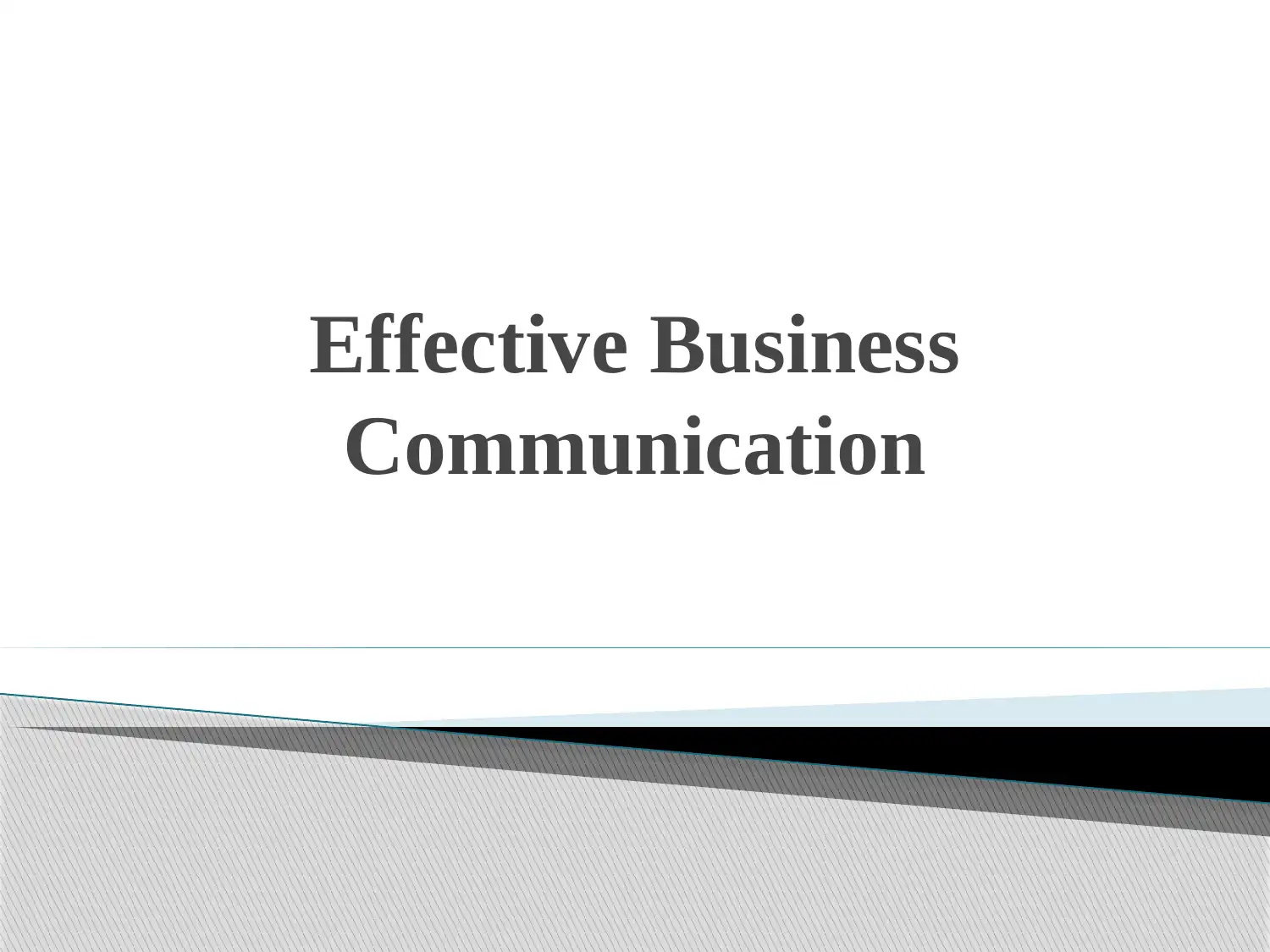
Effective Business
Communication
Communication
Paraphrase This Document
Need a fresh take? Get an instant paraphrase of this document with our AI Paraphraser
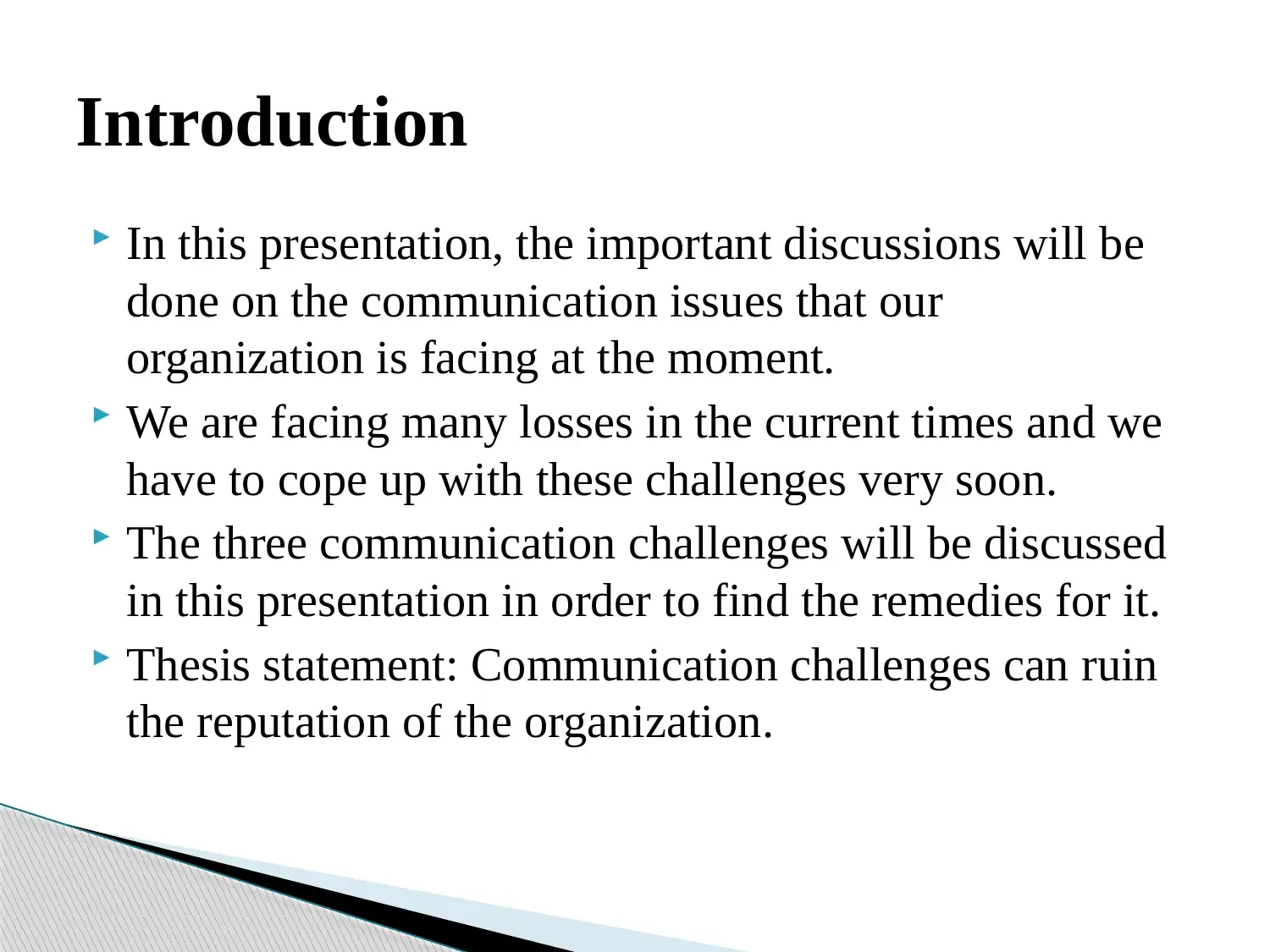
In this presentation, the important discussions will be
done on the communication issues that our
organization is facing at the moment.
We are facing many losses in the current times and we
have to cope up with these challenges very soon.
The three communication challenges will be discussed
in this presentation in order to find the remedies for it.
Thesis statement: Communication challenges can ruin
the reputation of the organization.
Introduction
done on the communication issues that our
organization is facing at the moment.
We are facing many losses in the current times and we
have to cope up with these challenges very soon.
The three communication challenges will be discussed
in this presentation in order to find the remedies for it.
Thesis statement: Communication challenges can ruin
the reputation of the organization.
Introduction
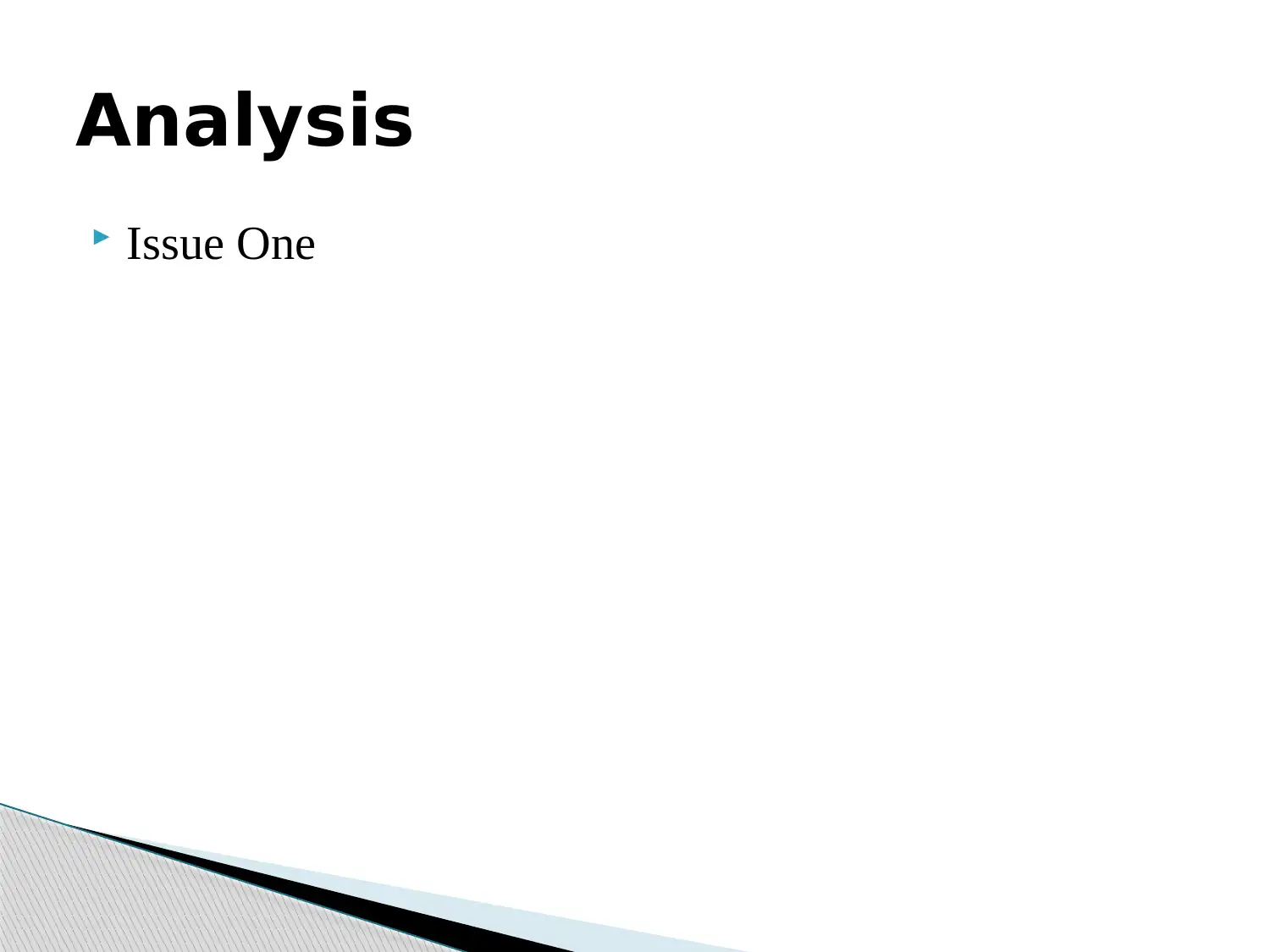
Issue One
Analysis
Analysis
⊘ This is a preview!⊘
Do you want full access?
Subscribe today to unlock all pages.

Trusted by 1+ million students worldwide
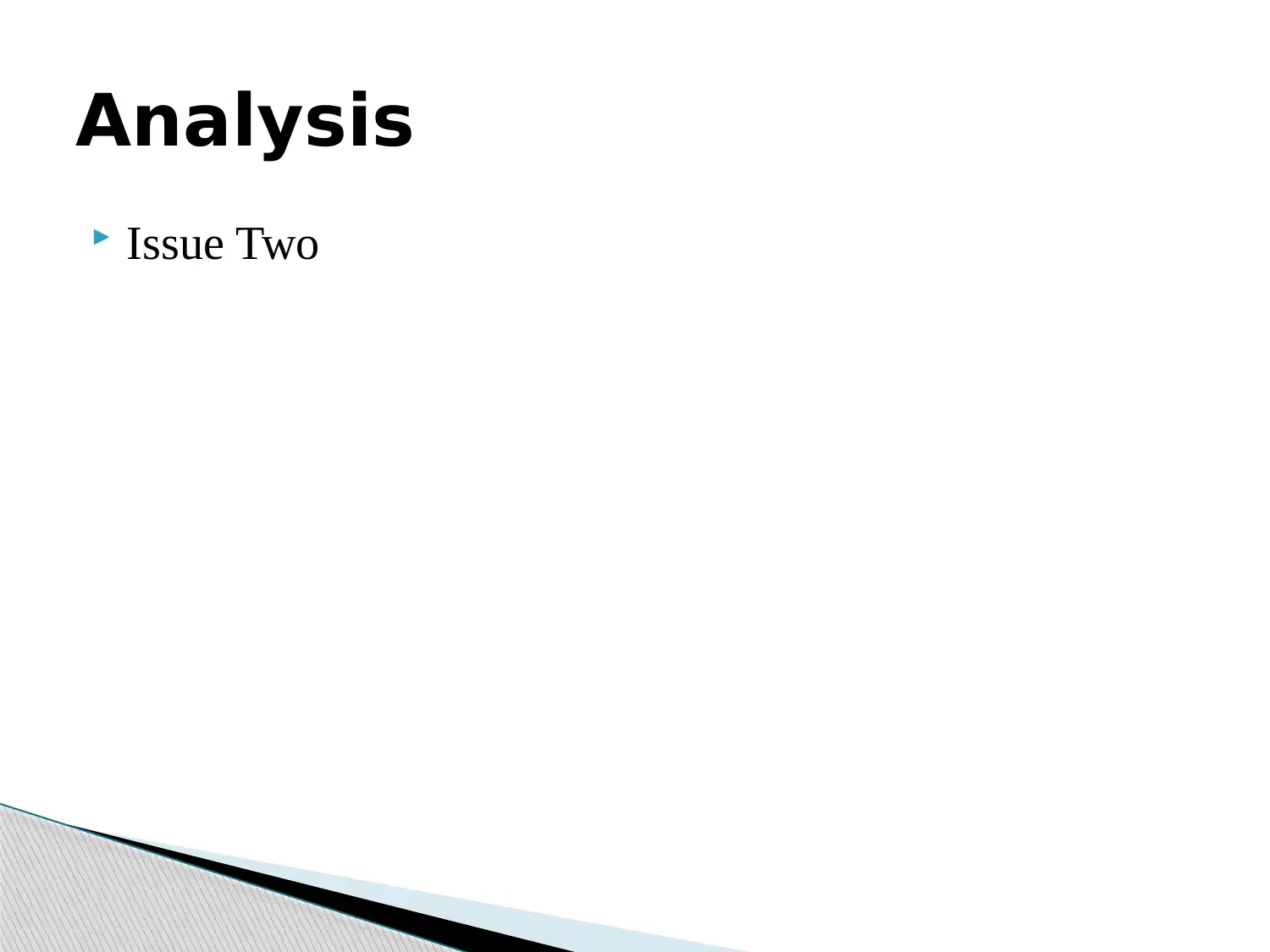
Issue Two
Analysis
Analysis
Paraphrase This Document
Need a fresh take? Get an instant paraphrase of this document with our AI Paraphraser
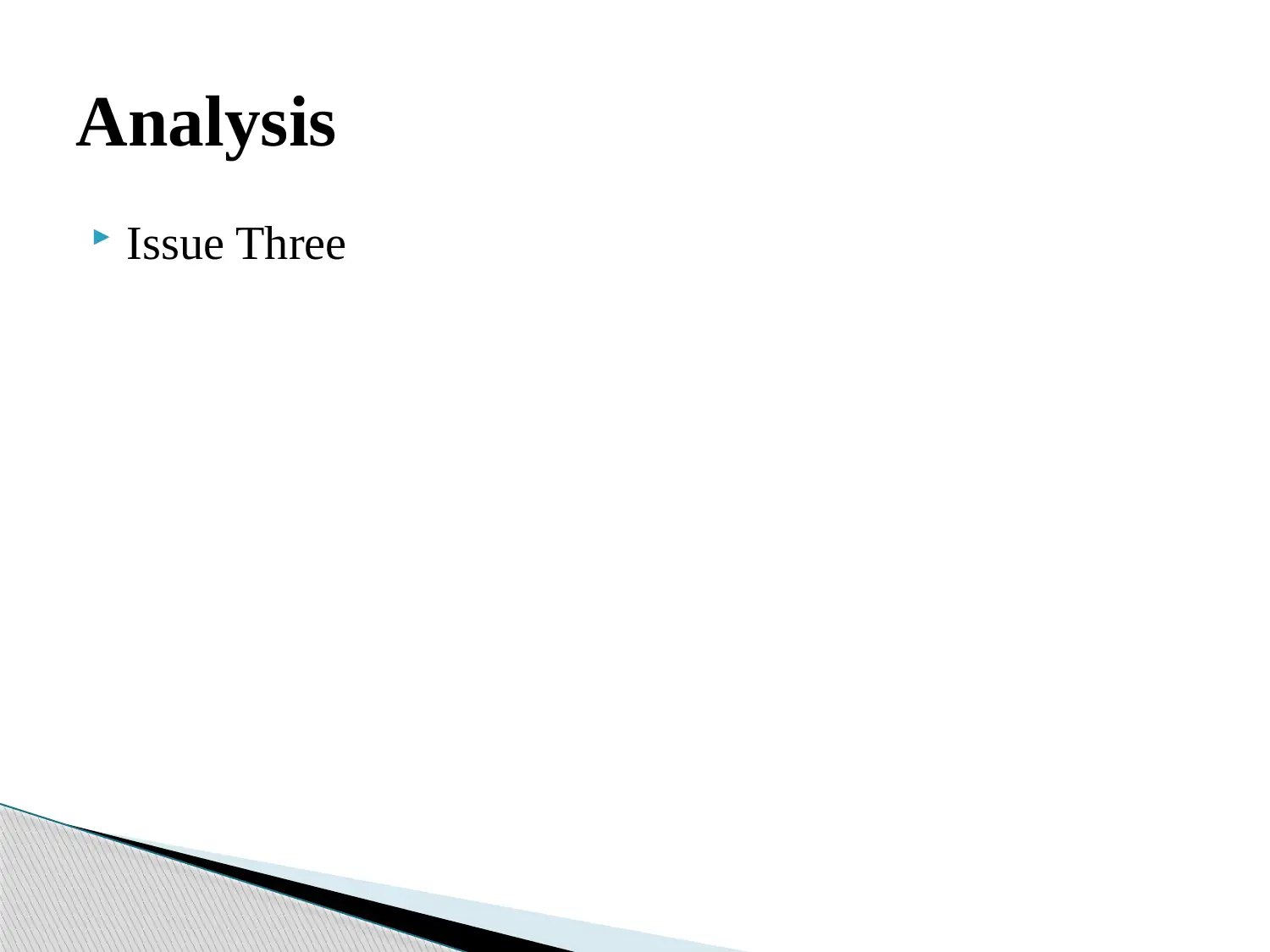
Issue Three
Analysis
Analysis
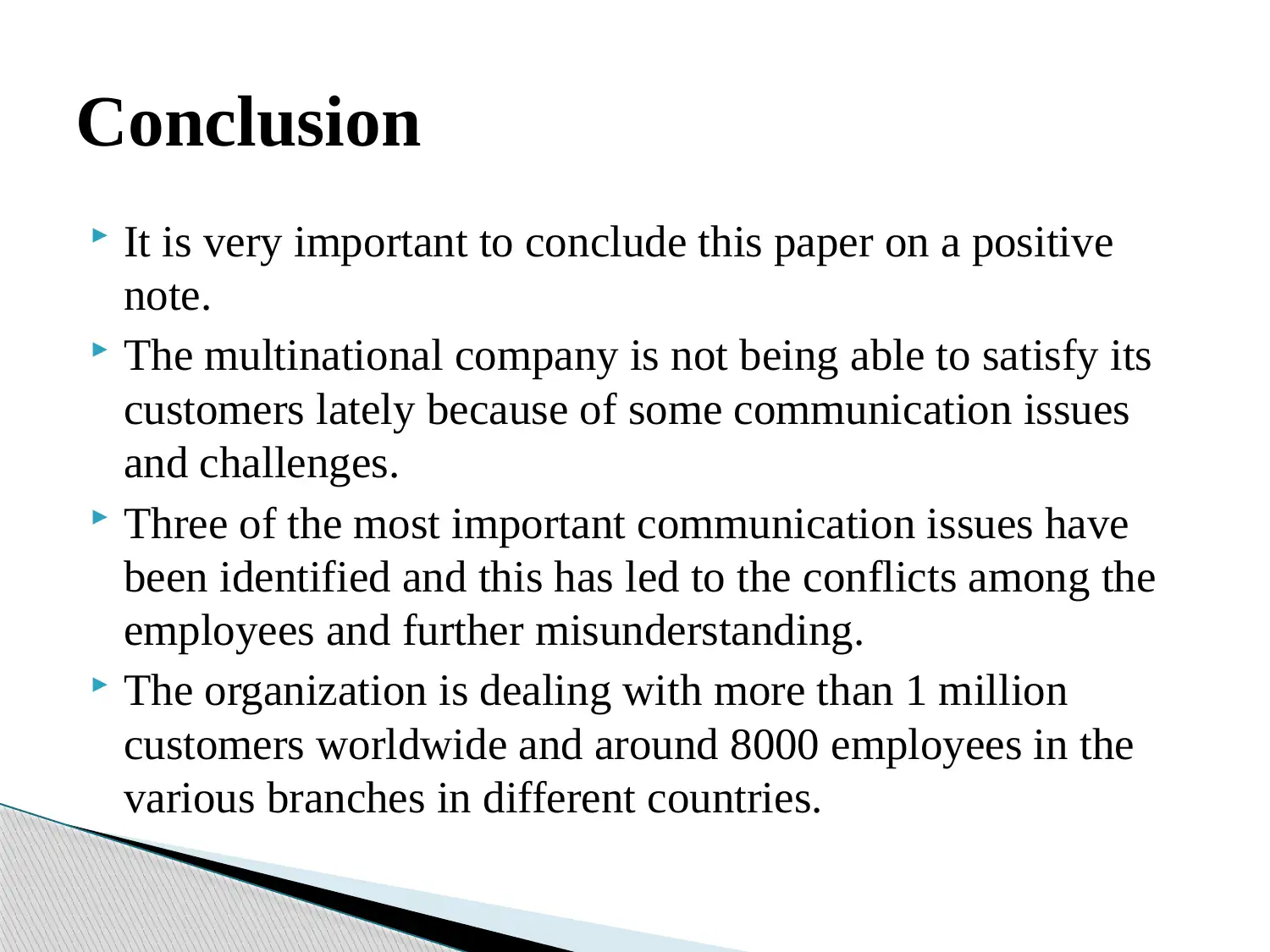
It is very important to conclude this paper on a positive
note.
The multinational company is not being able to satisfy its
customers lately because of some communication issues
and challenges.
Three of the most important communication issues have
been identified and this has led to the conflicts among the
employees and further misunderstanding.
The organization is dealing with more than 1 million
customers worldwide and around 8000 employees in the
various branches in different countries.
Conclusion
note.
The multinational company is not being able to satisfy its
customers lately because of some communication issues
and challenges.
Three of the most important communication issues have
been identified and this has led to the conflicts among the
employees and further misunderstanding.
The organization is dealing with more than 1 million
customers worldwide and around 8000 employees in the
various branches in different countries.
Conclusion
⊘ This is a preview!⊘
Do you want full access?
Subscribe today to unlock all pages.

Trusted by 1+ million students worldwide
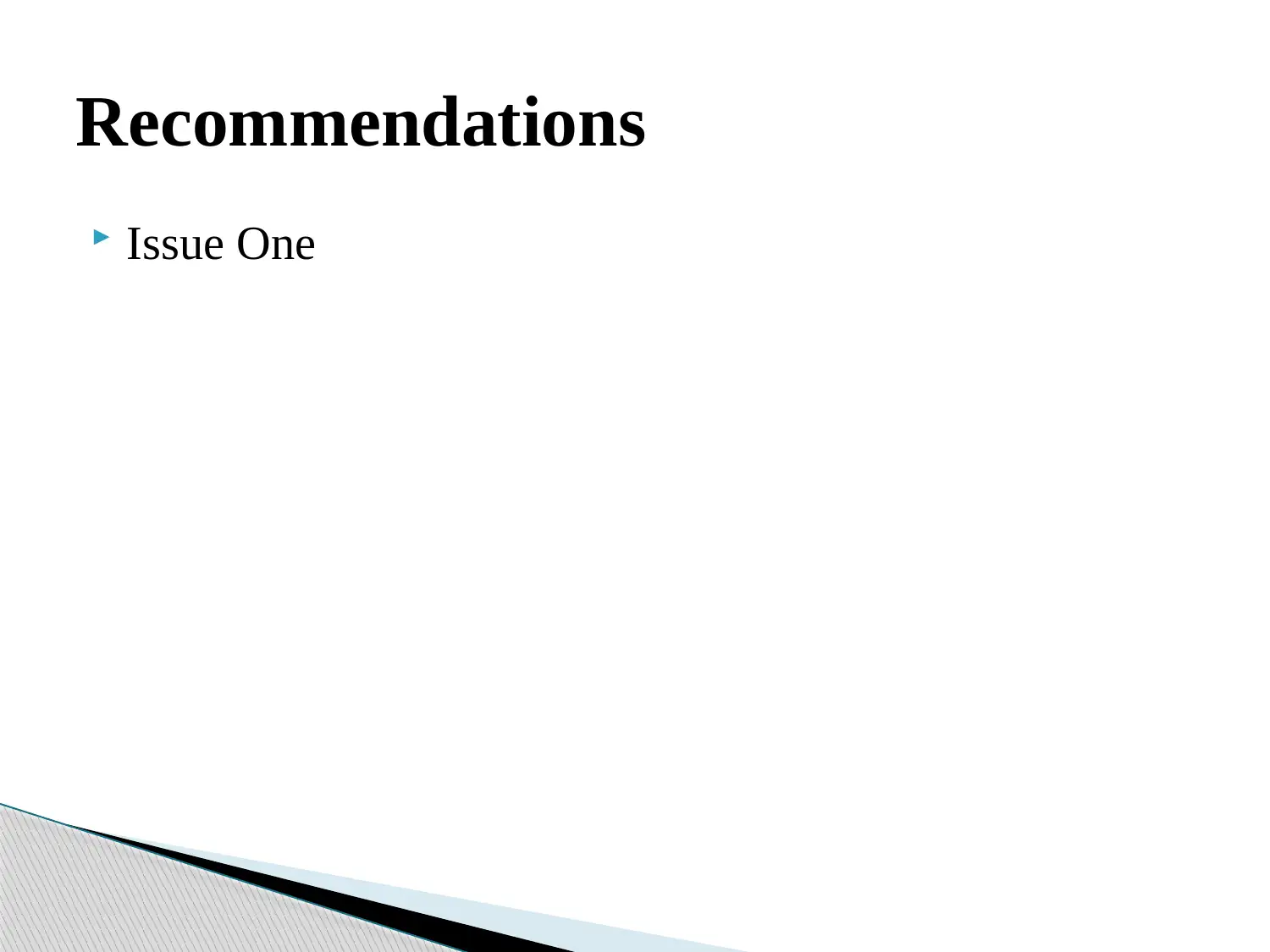
Issue One
Recommendations
Recommendations
Paraphrase This Document
Need a fresh take? Get an instant paraphrase of this document with our AI Paraphraser
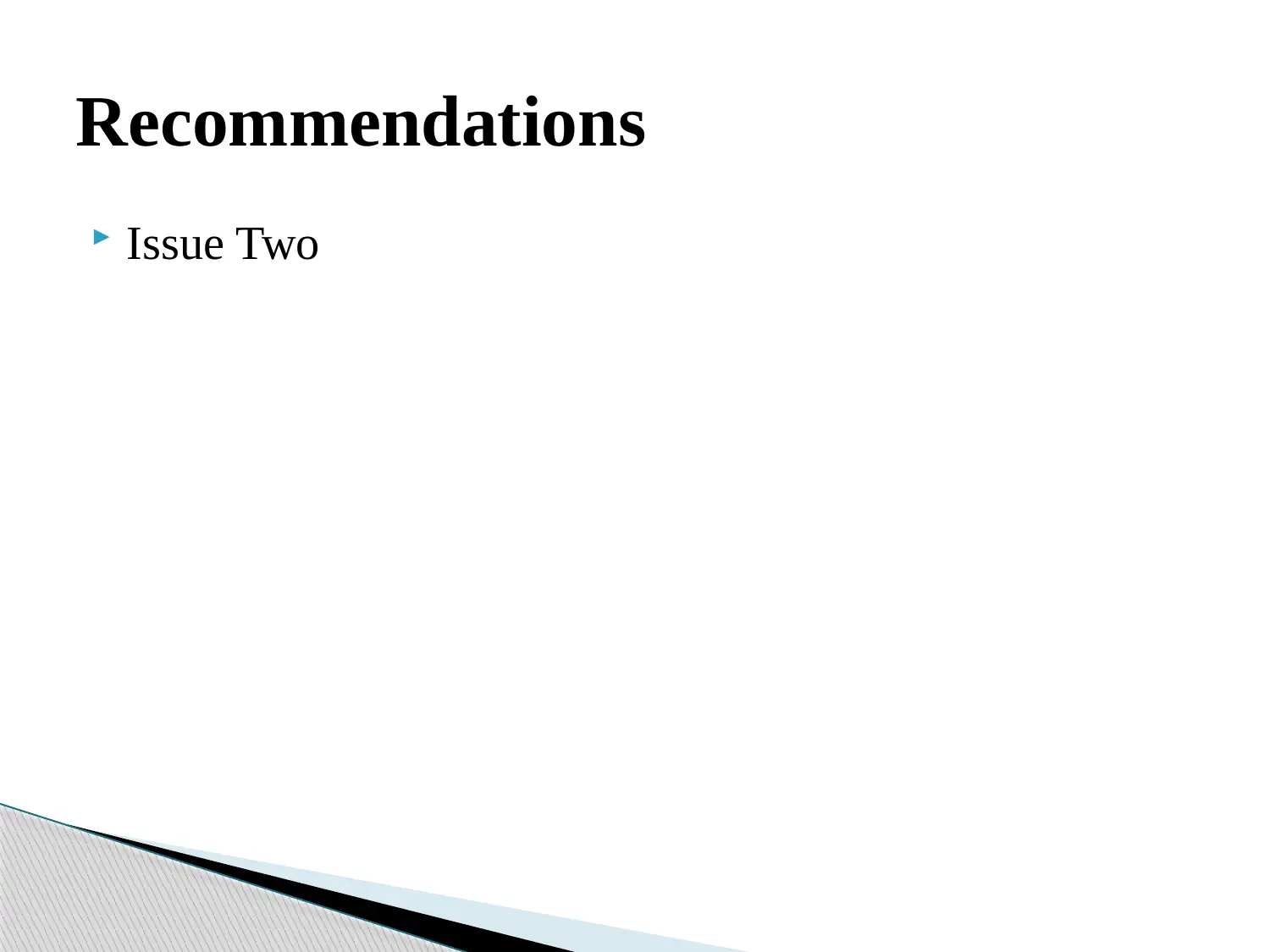
Issue Two
Recommendations
Recommendations
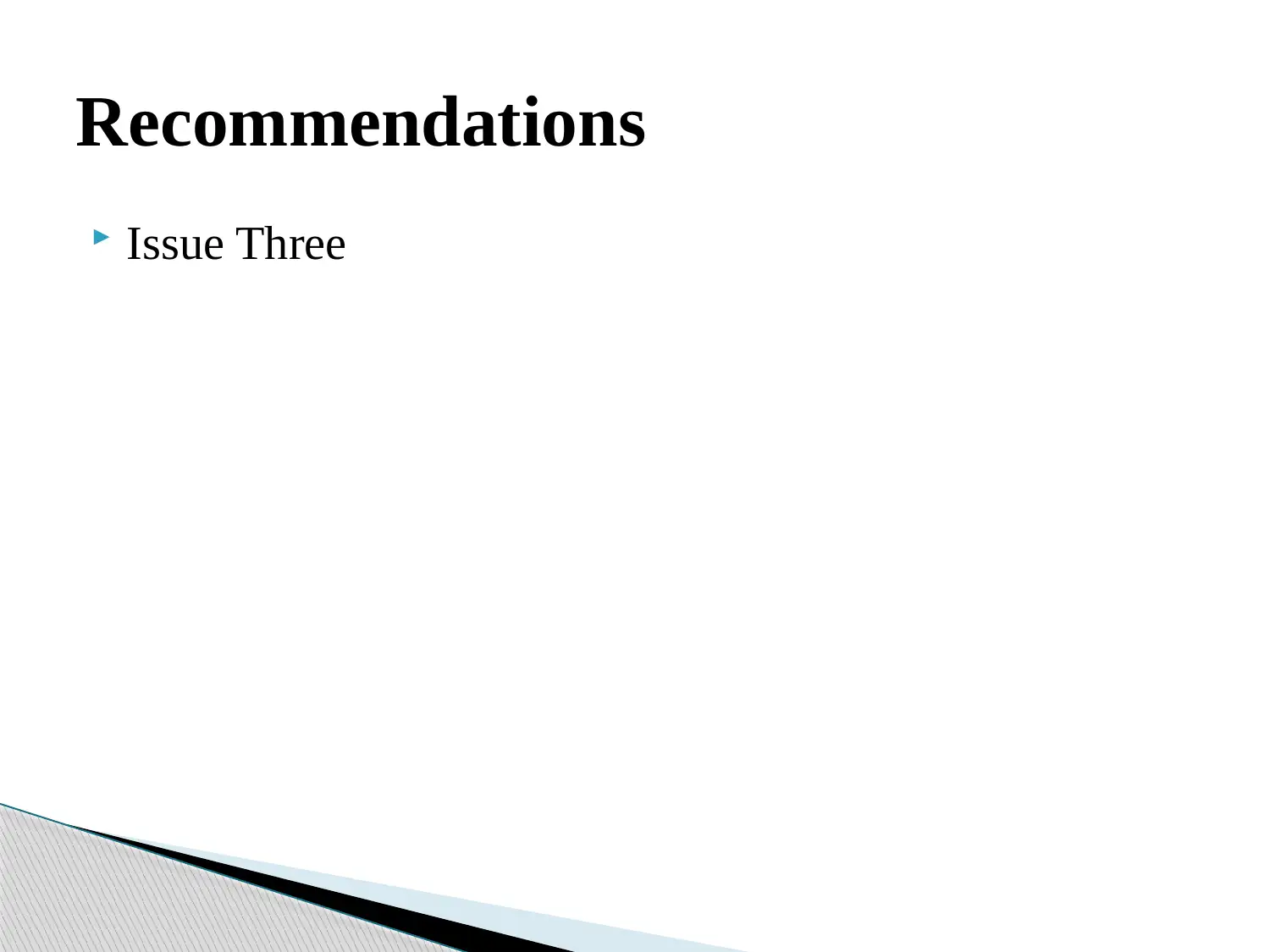
Issue Three
Recommendations
Recommendations
⊘ This is a preview!⊘
Do you want full access?
Subscribe today to unlock all pages.

Trusted by 1+ million students worldwide
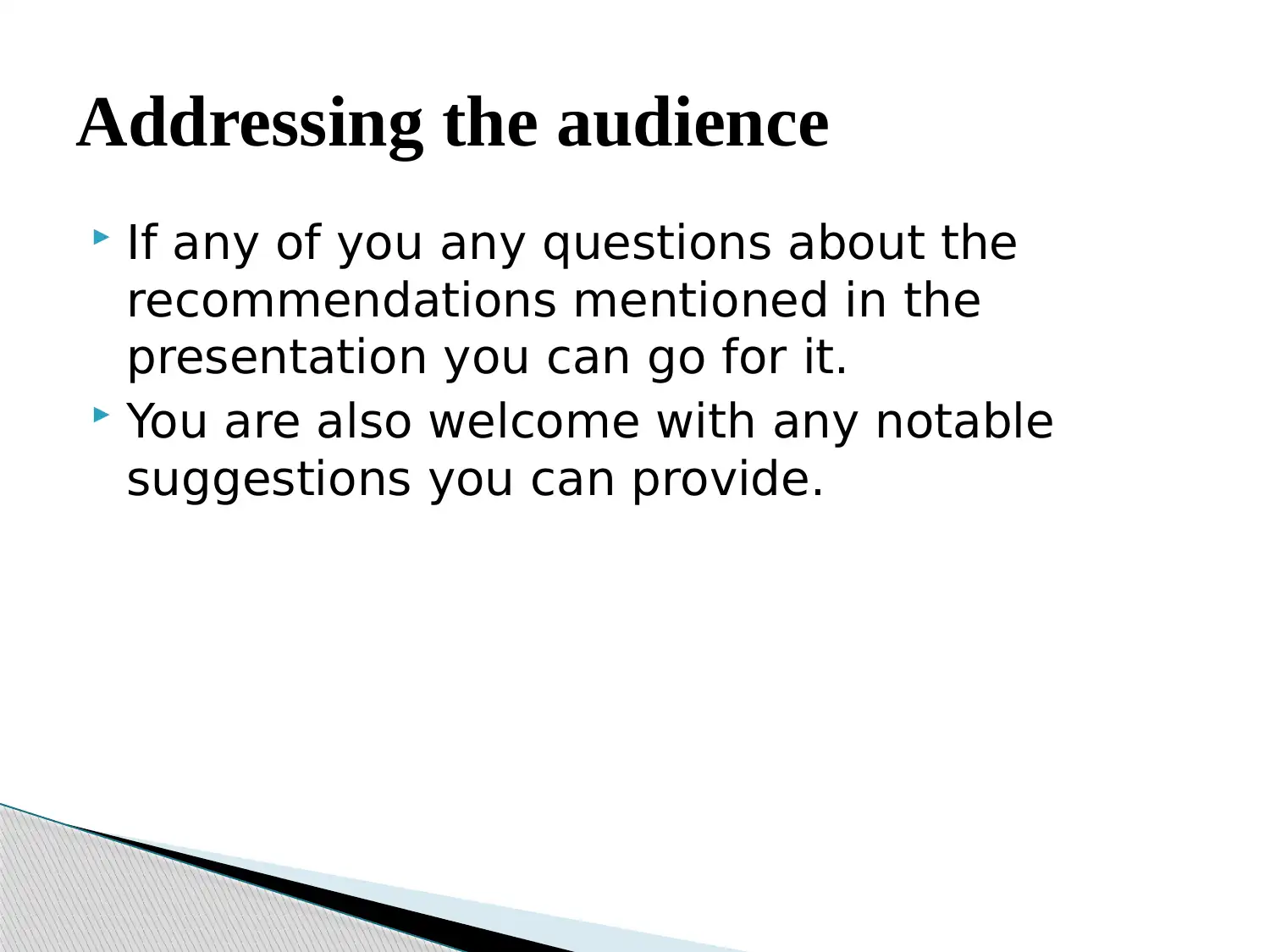
If any of you any questions about the
recommendations mentioned in the
presentation you can go for it.
You are also welcome with any notable
suggestions you can provide.
Addressing the audience
recommendations mentioned in the
presentation you can go for it.
You are also welcome with any notable
suggestions you can provide.
Addressing the audience
Paraphrase This Document
Need a fresh take? Get an instant paraphrase of this document with our AI Paraphraser
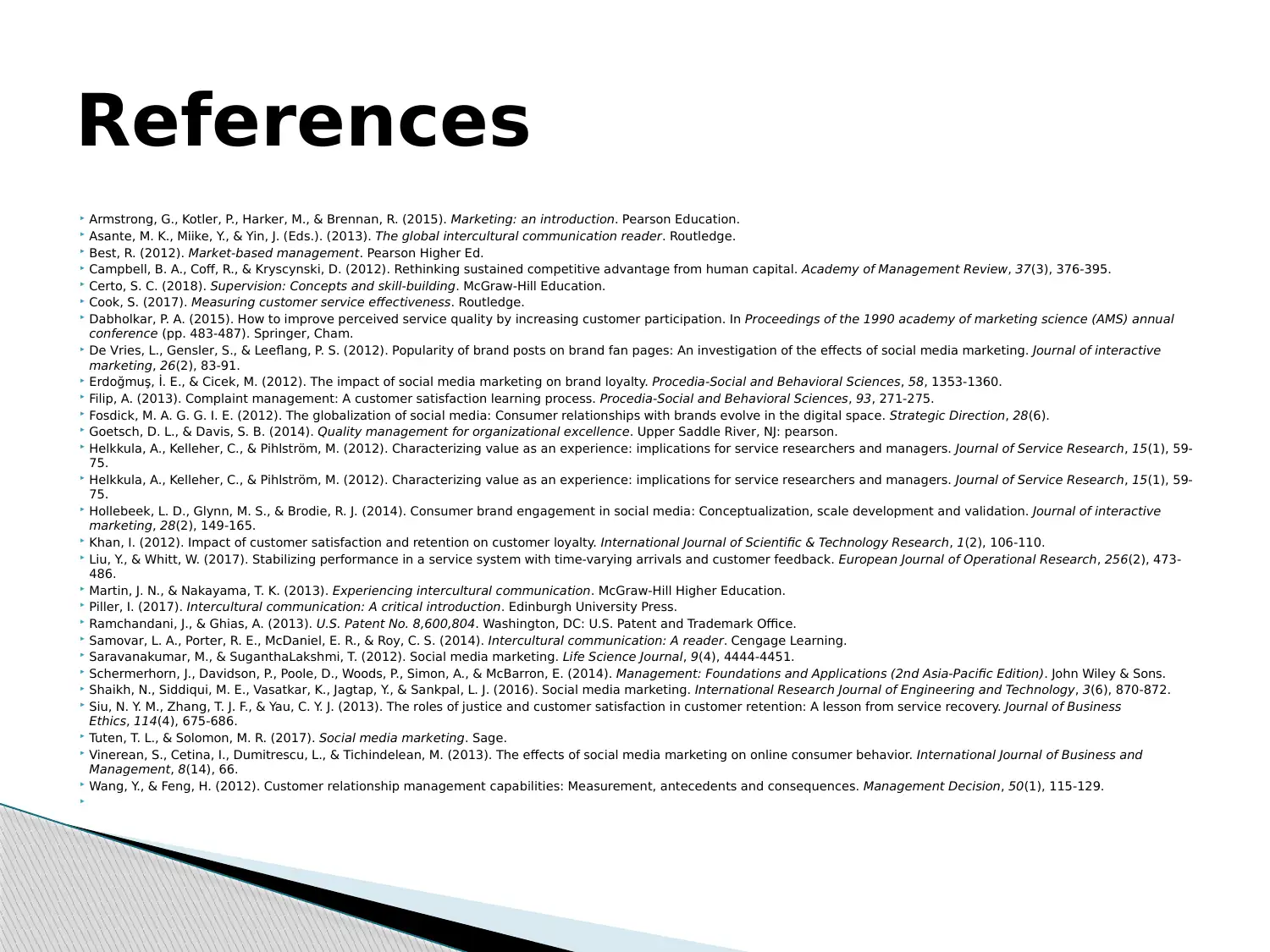
Armstrong, G., Kotler, P., Harker, M., & Brennan, R. (2015). Marketing: an introduction. Pearson Education.
Asante, M. K., Miike, Y., & Yin, J. (Eds.). (2013). The global intercultural communication reader. Routledge.
Best, R. (2012). Market-based management. Pearson Higher Ed.
Campbell, B. A., Coff, R., & Kryscynski, D. (2012). Rethinking sustained competitive advantage from human capital. Academy of Management Review, 37(3), 376-395.
Certo, S. C. (2018). Supervision: Concepts and skill-building. McGraw-Hill Education.
Cook, S. (2017). Measuring customer service effectiveness. Routledge.
Dabholkar, P. A. (2015). How to improve perceived service quality by increasing customer participation. In Proceedings of the 1990 academy of marketing science (AMS) annual
conference (pp. 483-487). Springer, Cham.
De Vries, L., Gensler, S., & Leeflang, P. S. (2012). Popularity of brand posts on brand fan pages: An investigation of the effects of social media marketing. Journal of interactive
marketing, 26(2), 83-91.
Erdoğmuş, İ. E., & Cicek, M. (2012). The impact of social media marketing on brand loyalty. Procedia-Social and Behavioral Sciences, 58, 1353-1360.
Filip, A. (2013). Complaint management: A customer satisfaction learning process. Procedia-Social and Behavioral Sciences, 93, 271-275.
Fosdick, M. A. G. G. I. E. (2012). The globalization of social media: Consumer relationships with brands evolve in the digital space. Strategic Direction, 28(6).
Goetsch, D. L., & Davis, S. B. (2014). Quality management for organizational excellence. Upper Saddle River, NJ: pearson.
Helkkula, A., Kelleher, C., & Pihlström, M. (2012). Characterizing value as an experience: implications for service researchers and managers. Journal of Service Research, 15(1), 59-
75.
Helkkula, A., Kelleher, C., & Pihlström, M. (2012). Characterizing value as an experience: implications for service researchers and managers. Journal of Service Research, 15(1), 59-
75.
Hollebeek, L. D., Glynn, M. S., & Brodie, R. J. (2014). Consumer brand engagement in social media: Conceptualization, scale development and validation. Journal of interactive
marketing, 28(2), 149-165.
Khan, I. (2012). Impact of customer satisfaction and retention on customer loyalty. International Journal of Scientific & Technology Research, 1(2), 106-110.
Liu, Y., & Whitt, W. (2017). Stabilizing performance in a service system with time-varying arrivals and customer feedback. European Journal of Operational Research, 256(2), 473-
486.
Martin, J. N., & Nakayama, T. K. (2013). Experiencing intercultural communication. McGraw-Hill Higher Education.
Piller, I. (2017). Intercultural communication: A critical introduction. Edinburgh University Press.
Ramchandani, J., & Ghias, A. (2013). U.S. Patent No. 8,600,804. Washington, DC: U.S. Patent and Trademark Office.
Samovar, L. A., Porter, R. E., McDaniel, E. R., & Roy, C. S. (2014). Intercultural communication: A reader. Cengage Learning.
Saravanakumar, M., & SuganthaLakshmi, T. (2012). Social media marketing. Life Science Journal, 9(4), 4444-4451.
Schermerhorn, J., Davidson, P., Poole, D., Woods, P., Simon, A., & McBarron, E. (2014). Management: Foundations and Applications (2nd Asia-Pacific Edition). John Wiley & Sons.
Shaikh, N., Siddiqui, M. E., Vasatkar, K., Jagtap, Y., & Sankpal, L. J. (2016). Social media marketing. International Research Journal of Engineering and Technology, 3(6), 870-872.
Siu, N. Y. M., Zhang, T. J. F., & Yau, C. Y. J. (2013). The roles of justice and customer satisfaction in customer retention: A lesson from service recovery. Journal of Business
Ethics, 114(4), 675-686.
Tuten, T. L., & Solomon, M. R. (2017). Social media marketing. Sage.
Vinerean, S., Cetina, I., Dumitrescu, L., & Tichindelean, M. (2013). The effects of social media marketing on online consumer behavior. International Journal of Business and
Management, 8(14), 66.
Wang, Y., & Feng, H. (2012). Customer relationship management capabilities: Measurement, antecedents and consequences. Management Decision, 50(1), 115-129.
References
Asante, M. K., Miike, Y., & Yin, J. (Eds.). (2013). The global intercultural communication reader. Routledge.
Best, R. (2012). Market-based management. Pearson Higher Ed.
Campbell, B. A., Coff, R., & Kryscynski, D. (2012). Rethinking sustained competitive advantage from human capital. Academy of Management Review, 37(3), 376-395.
Certo, S. C. (2018). Supervision: Concepts and skill-building. McGraw-Hill Education.
Cook, S. (2017). Measuring customer service effectiveness. Routledge.
Dabholkar, P. A. (2015). How to improve perceived service quality by increasing customer participation. In Proceedings of the 1990 academy of marketing science (AMS) annual
conference (pp. 483-487). Springer, Cham.
De Vries, L., Gensler, S., & Leeflang, P. S. (2012). Popularity of brand posts on brand fan pages: An investigation of the effects of social media marketing. Journal of interactive
marketing, 26(2), 83-91.
Erdoğmuş, İ. E., & Cicek, M. (2012). The impact of social media marketing on brand loyalty. Procedia-Social and Behavioral Sciences, 58, 1353-1360.
Filip, A. (2013). Complaint management: A customer satisfaction learning process. Procedia-Social and Behavioral Sciences, 93, 271-275.
Fosdick, M. A. G. G. I. E. (2012). The globalization of social media: Consumer relationships with brands evolve in the digital space. Strategic Direction, 28(6).
Goetsch, D. L., & Davis, S. B. (2014). Quality management for organizational excellence. Upper Saddle River, NJ: pearson.
Helkkula, A., Kelleher, C., & Pihlström, M. (2012). Characterizing value as an experience: implications for service researchers and managers. Journal of Service Research, 15(1), 59-
75.
Helkkula, A., Kelleher, C., & Pihlström, M. (2012). Characterizing value as an experience: implications for service researchers and managers. Journal of Service Research, 15(1), 59-
75.
Hollebeek, L. D., Glynn, M. S., & Brodie, R. J. (2014). Consumer brand engagement in social media: Conceptualization, scale development and validation. Journal of interactive
marketing, 28(2), 149-165.
Khan, I. (2012). Impact of customer satisfaction and retention on customer loyalty. International Journal of Scientific & Technology Research, 1(2), 106-110.
Liu, Y., & Whitt, W. (2017). Stabilizing performance in a service system with time-varying arrivals and customer feedback. European Journal of Operational Research, 256(2), 473-
486.
Martin, J. N., & Nakayama, T. K. (2013). Experiencing intercultural communication. McGraw-Hill Higher Education.
Piller, I. (2017). Intercultural communication: A critical introduction. Edinburgh University Press.
Ramchandani, J., & Ghias, A. (2013). U.S. Patent No. 8,600,804. Washington, DC: U.S. Patent and Trademark Office.
Samovar, L. A., Porter, R. E., McDaniel, E. R., & Roy, C. S. (2014). Intercultural communication: A reader. Cengage Learning.
Saravanakumar, M., & SuganthaLakshmi, T. (2012). Social media marketing. Life Science Journal, 9(4), 4444-4451.
Schermerhorn, J., Davidson, P., Poole, D., Woods, P., Simon, A., & McBarron, E. (2014). Management: Foundations and Applications (2nd Asia-Pacific Edition). John Wiley & Sons.
Shaikh, N., Siddiqui, M. E., Vasatkar, K., Jagtap, Y., & Sankpal, L. J. (2016). Social media marketing. International Research Journal of Engineering and Technology, 3(6), 870-872.
Siu, N. Y. M., Zhang, T. J. F., & Yau, C. Y. J. (2013). The roles of justice and customer satisfaction in customer retention: A lesson from service recovery. Journal of Business
Ethics, 114(4), 675-686.
Tuten, T. L., & Solomon, M. R. (2017). Social media marketing. Sage.
Vinerean, S., Cetina, I., Dumitrescu, L., & Tichindelean, M. (2013). The effects of social media marketing on online consumer behavior. International Journal of Business and
Management, 8(14), 66.
Wang, Y., & Feng, H. (2012). Customer relationship management capabilities: Measurement, antecedents and consequences. Management Decision, 50(1), 115-129.
References

⊘ This is a preview!⊘
Do you want full access?
Subscribe today to unlock all pages.

Trusted by 1+ million students worldwide
1 out of 12
Related Documents
Your All-in-One AI-Powered Toolkit for Academic Success.
+13062052269
info@desklib.com
Available 24*7 on WhatsApp / Email
![[object Object]](/_next/static/media/star-bottom.7253800d.svg)
Unlock your academic potential
Copyright © 2020–2025 A2Z Services. All Rights Reserved. Developed and managed by ZUCOL.




